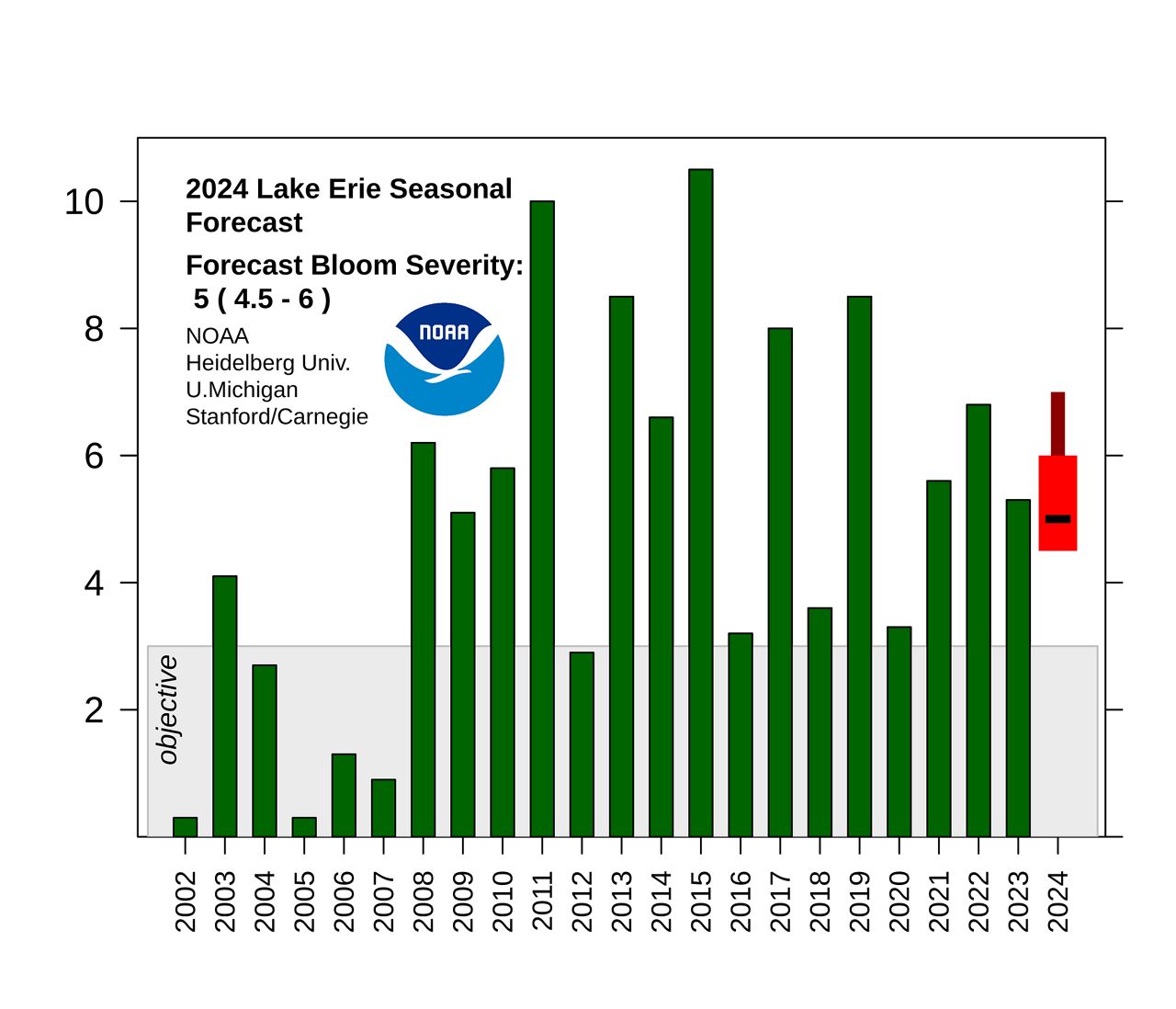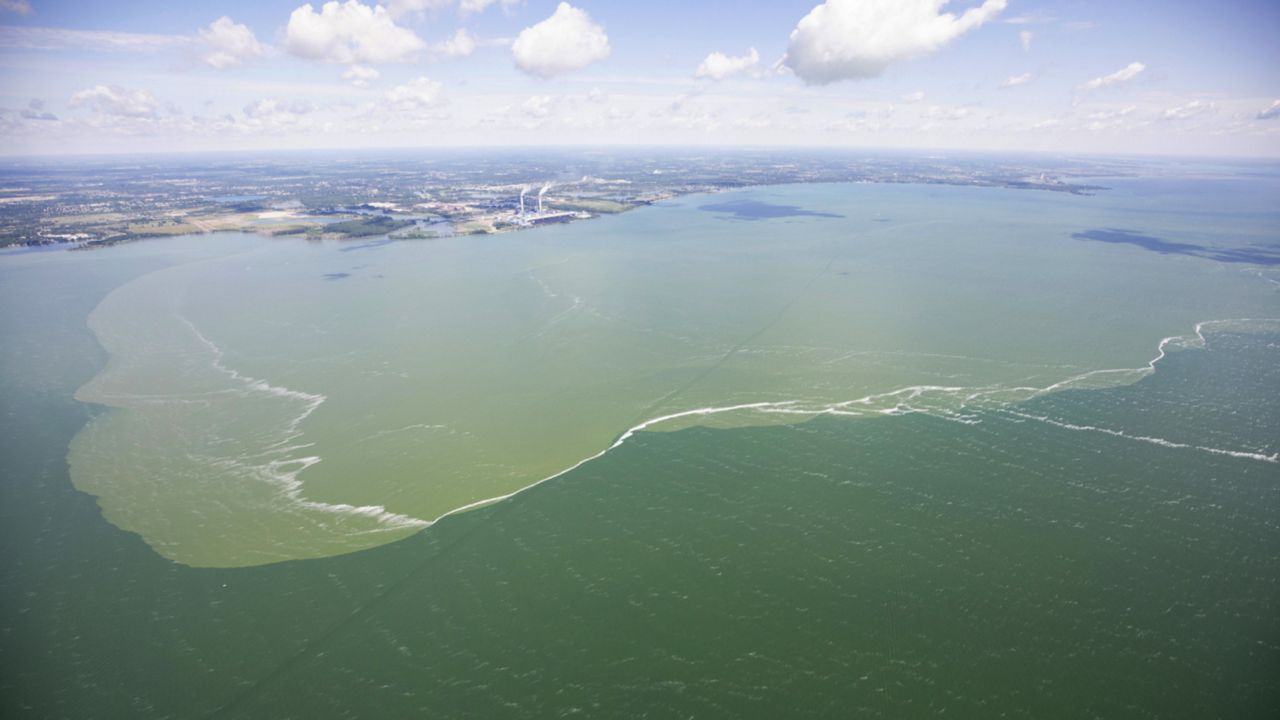Prepare yourself for an algal bloom this summer, as the National Oceanic and Atmospheric Administration (NOAA) is predicting that the western portion of Lake Erie “will experience a moderate to larger-than-moderate harmful algal bloom.”
While the duration cannot yet be predicted, the bloom is expected to measure at around a level five on the severity index. A post on the National Centers for Coastal Ocean Science (NCCOS) states that events rated over this level have “substantive impacts” that include visible “scum” on the lake.
"Understanding hazards such as harmful algal blooms helps us ensure the Great Lakes are a power in the Blue Economy," said Nicole LeBoeuf, director of NOAA's National Ocean Service, in a NOAA press release. "As the science behind our forecasts improves, we can give communities better information to plan for varying blooms."
According to NOAA, the bloom is expected to be visible in early July and will stay around the western basin of Lake Erie.
“The central and eastern basins of the lake are usually unaffected until later in the season, although localized blooms may occur around some of the rivers after summer rainstorms,” the release reads.
The release states that the harmful algal blooms in Lake Erie are made up of cyanobacteria that produce microcystin, “a known liver toxin which poses a risk to human and wildlife health.”

These sort of blooms can have a variety of effects on surrounding communities, whether it’s beach closings, drinking water treatment or even hindering lake-dependent industries like fishing.
NOAA states that the largest blooms were a 10 in 2011 and a 10.5 in 2015. They also note that toxicity is not necessarily determined by size and that they’re working on tools for detecting and predicting toxicity.
They also point people toward their Lake Erie HAB Forecast website for predictions and visualizations.
“NOAA’s Lake Erie HAB forecast continues to be an important tool to help inform decisions made by drinking water treatment plants, local governments and individuals visiting Lake Erie’s shoreline and recreating on its waters,” said Christopher Winslow, director of Ohio Sea Grant and Stone Laboratory, in the release. “Additionally, data collected before and during each bloom season continues to inform management decisions related to nutrient management and bloom response.”



